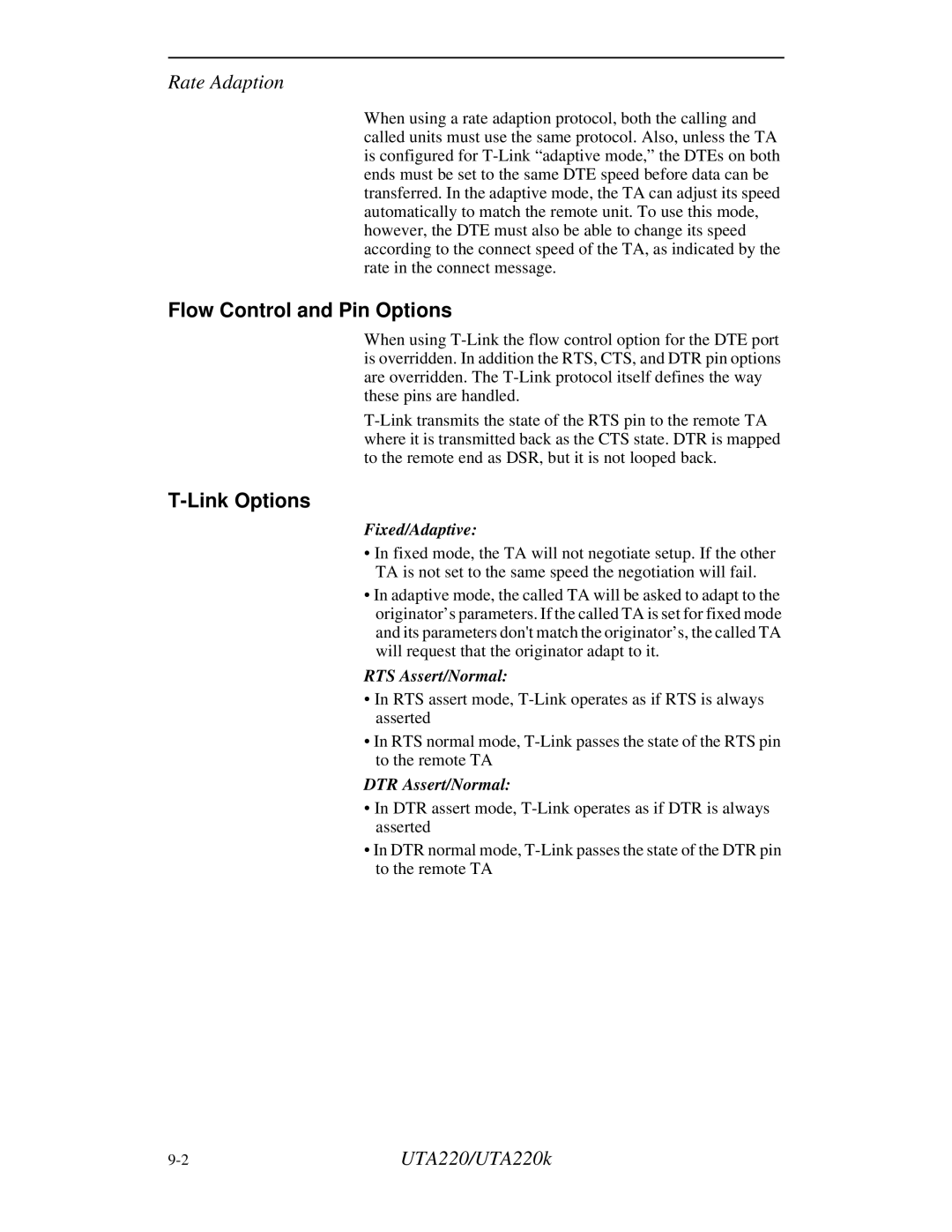Rate Adaption
When using a rate adaption protocol, both the calling and called units must use the same protocol. Also, unless the TA is configured for T-Link “adaptive mode,” the DTEs on both ends must be set to the same DTE speed before data can be transferred. In the adaptive mode, the TA can adjust its speed automatically to match the remote unit. To use this mode, however, the DTE must also be able to change its speed according to the connect speed of the TA, as indicated by the rate in the connect message.
Flow Control and Pin Options
When using T-Link the flow control option for the DTE port is overridden. In addition the RTS, CTS, and DTR pin options are overridden. The T-Link protocol itself defines the way these pins are handled.
T-Link transmits the state of the RTS pin to the remote TA where it is transmitted back as the CTS state. DTR is mapped to the remote end as DSR, but it is not looped back.
T-Link Options
Fixed/Adaptive:
•In fixed mode, the TA will not negotiate setup. If the other TA is not set to the same speed the negotiation will fail.
•In adaptive mode, the called TA will be asked to adapt to the originator’s parameters. If the called TA is set for fixed mode and its parameters don't match the originator’s, the called TA will request that the originator adapt to it.
RTS Assert/Normal:
•In RTS assert mode, T-Link operates as if RTS is always asserted
•In RTS normal mode, T-Link passes the state of the RTS pin to the remote TA
DTR Assert/Normal:
•In DTR assert mode, T-Link operates as if DTR is always asserted
•In DTR normal mode, T-Link passes the state of the DTR pin to the remote TA
